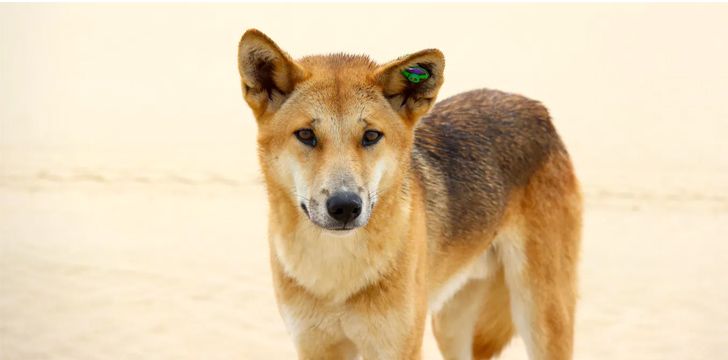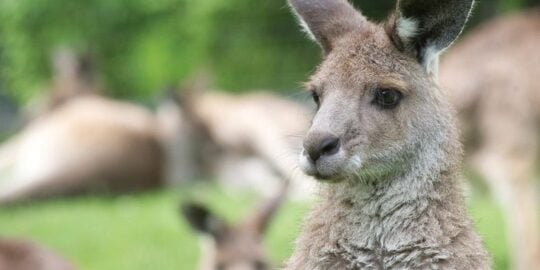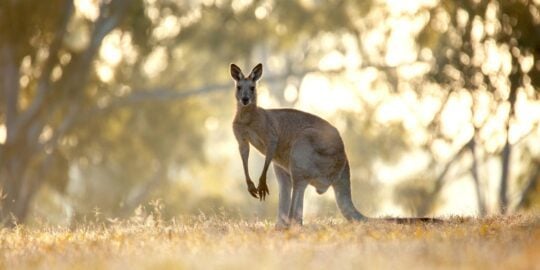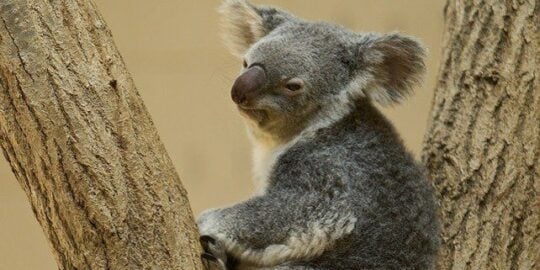If you don’t know anything about dingoes besides the fact they’re from Australia, then you’ve come to the right place!
These fascinating creatures come with many fun facts and figures – even if you’re not a fan of animals, there’s something here to make everyone raise an eyebrow.
Historians aren’t sure whether the dingo was ever a domesticated pet or whether they have always been wild creatures. One theory suggests that they were domesticated for a while until they were left to revert back to their wild state.
One of the longest structures in the whole world is a fence in Southeast Australia which was built in the 1920’s to keep dingoes away from farm animals. Spanning more than 4,970 miles (8000 km) at its longest, the fence costs around $10 million per year to maintain.
In the 1980’s, the fence (colloquially named “The Dingo Fence”) was shortened by around 745 miles (1200 km) since it was in dire need of repairs.
There isn’t just one type of dingo – there are three main varieties. You’ll see either the reddish golden dingo in the desert areas, the alpine dingo in the wildest parts of Australia, and finally, the northern dingo with its finer build.
Another name for a dingo is a “warrigal.”
Depending on the area of Australia, it may be legal to own a pet dingo. In New South Wales, for example, you don’t even need a permit to own one. In Queensland, on the other hand, it’s completely illegal to own a dingo.
Many of the cattle dogs and kelpies in Australia are part-dingo due to breeding through the years.
One of the ways in which dingoes are different to domesticated dogs is the fact that they have flexible wrists just like humans do. This allows them to maneuver more easily into tricky areas, and climb trees with more ease than dogs.
Dingoes are also able to turn their heads 180 degrees, which is more than the domesticated dogs that we’re used to keeping as pets. This helps them to hunt and look out for prey much easier.
Dingoes are much more like wolves than dogs. They don’t bark, but instead, you’ll hear their wolf-like howl which sounds like a yodel.
The average life span of a wild dingo is 5-10 years. Kept in captivity, however, they can live for as long as 20 years.
The earliest dingo was thought to live around 3,500 years ago. However, there is no concrete evidence for this, and historians estimate a broad time frame of 4,500 – 18,000 years ago.
A female dingo will eat the droppings of her offspring – disgusting!
Although dingoes are about the same size as a Springer Spaniel, they are brave enough to target an adult kangaroo when hunting in packs.
Dingoes like to hunt rabbits, sheep, kangaroos and other wild animals. However if prey is looking a bit scarce, they will happily feed on other food. Eggs and birds are just a small part of their varied diet.
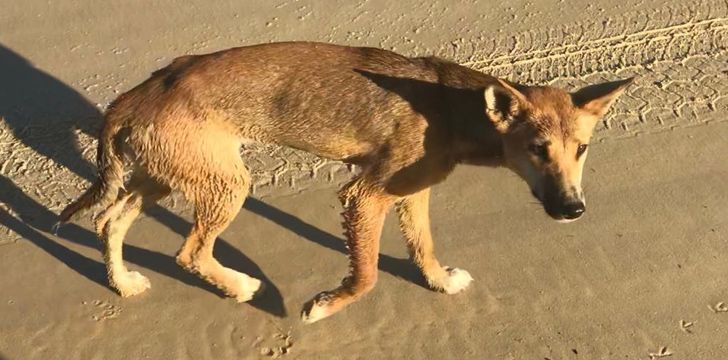
When food is plentiful and they end up with more than enough, they will often bury the leftovers to eat later.
If you want to find a wild dingo in Australia, look particularly near large bodies of water. These animals are often found in vacant rabbit holes, hollow logs and other burrows close to lakes and rivers.
While dingoes like to live near water, they have learned over the years to conserve water. In many instances, the stronger animals will drink the water if there is a limited supply, while older or weaker ones will go without.
As well as rationing the water, the stronger dingoes will prevent the older and weaker animals from accessing the food supply. This means that as the animals get weak, they quickly die as a result of starvation or poor nutrition and diet.
In a pack of 12 dingoes, there is usually a male and a female who are the strongest and will mate in order to reproduce for the entire pack. When the female gives birth (usually around 5-6 puppies at a time), the other animals in the pack will help to raise the young.
The dominant female will usually kill any other puppies which are born into the pack. This is mainly due to the fact that she wants the other females to look after her babies rather than their own.
While dingoes will happily eat many different animals out in the wild, there aren’t many creatures which come hunting after them. One of their biggest threats are their peers, since it isn’t likely that both dogs will last in a fight! Aside from this, farmers might try to shoot at them if they come close to a farm, or a crocodile might occasionally attempt a dingo for dinner.
Although not many creatures will try to attack an adult dingo, the puppies will often be targeted by snakes.
Over the years, dingoes have bred with other dogs, so many animal experts and historians doubt the existence of truly “pure” dingoes in modern Australia.
Even though they might seem scary, dingoes aren’t often seen targeting humans, and they are much more likely to run away from you than attack you.
When in packs, dingoes become very protective of their space and their pack members. If a foreign dingo tries to enter their territory, it’s unlikely that he will escape alive!
Dingo mating season lasts around four months, starting in March and ending in June. During this time, dingoes are often very social, while for the rest of the year, they tend to keep to themselves.
There have been rare occasions in Australia where a wild dingo has made its way into a home or hotel room and attacked a child or baby. In these unfortunate circumstances, the dingo has usually been captured by rangers and put down.
While dingoes are unique to Australia, the United States has the pariah dog, which could be considered to be a version of the dingo.
Dingoes have generally been considered somewhat invincible over the years. It appears that not many other animals will try to target them, and even with walls being built and farmers regularly shooting at them, there still exist in abundance today.

